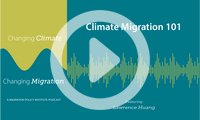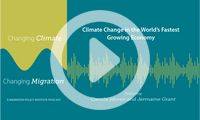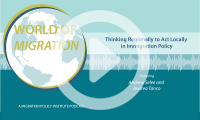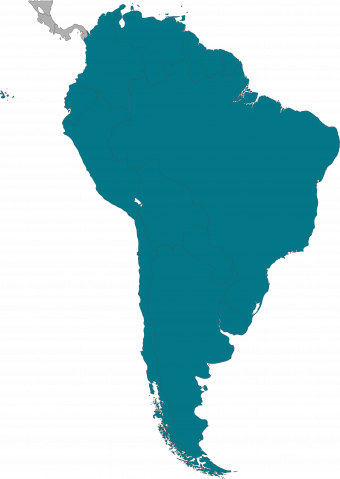South America
Recent Activity

Climate migration sounds simple. It is not. MPI’s Lawrence Huang answers some of the most common questions around one of the least understood dynamics in human movement.

Guyana is a small country in South America that will be greatly transformed by the recent discovery of massive offshore oil reserves. This episode of Changing Climate, Changing Migration discusses how the world’s fastest growing economy is confronting environmental change, particularly with economic growth and proximity to troubled Venezuela likely to drive significant immigration.
The presidents of Colombia and Ecuador speak at this high-level event held on the sidelines of the Ninth Summit of the Americas, focusing on the critical need for succcessful integration of Venezuelans in the Americas.

With migration a dynamic phenomenon in the Americas, the U.S. government increasingly is realizing that migration management should be viewed in a regional context. This requires a new set of policies and ways of engagement with countries in North and Central America, and beyond, as MPI President Andrew Selee discusses with colleague Andrea Tanco in this episode of our World of Migration podcast.

In this webinar, speakers examine issues of integration and social cohesion in Colombia, and explore how the international community can support Colombia and other countries receiving significant numbers of Venezuelan migrants and refugees. They also discuss Colombian initiatives that seek to improve the situation for migrants as well as the host communities where they reside.
Pages
Recent Activity
The COVID-19 pandemic hit South American nations at a time when many were already contending with major migration challenges. Historic levels of intraregional migration and displacement, notably from Venezuela, collided with countries’ attempts to stop the spread of a new threat to public health. This report examines the region’s responses to the public-health crisis, and the immediate and lasting impacts on cross-border movement.
Ecuador se ha convertido en un destino importante para los migrantes sudamericanos, un país de tránsito para quienes se dirigen al norte y una fuente renovada de emigración. El pequeño país andino se ha visto enredado en las tendencias cambiantes de movilidad de la región y ha respondido a las circunstancias cambiantes con una combinación de políticas que ha producido algunos resultados imprevistos.

















Regional Processing Centers: Can This Key Component of the Post-Title 42 U.S. Strategy Work?
Record-Breaking Migrant Encounters at the U.S.-Mexico Border Overlook the Bigger Story
El número récord de encuentros con migrantes en la frontera México-Estados Unidos encubre la historia más importante
The Los Angeles Declaration Could Represent a Big Step for Real Migration Cooperation across the Americas
La Declaración de Los Ángeles podría representar un gran paso para la cooperación migratoria real en las Américas
The Ukrainian Conflict Could Be a Tipping Point for Refugee Protection
¿Qué sigue ahora luego de que Colombia haya dado un paso histórico en materia de migración?
What Comes Next Now that Colombia Has Taken a Historic Step on Migration?